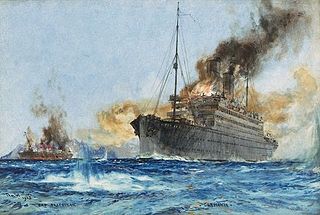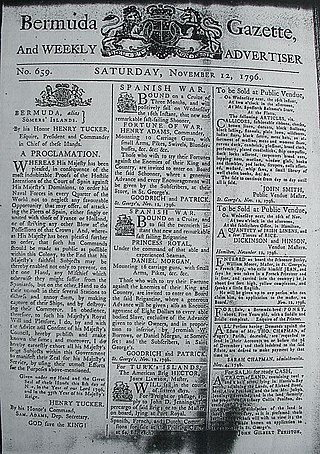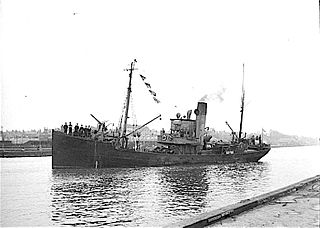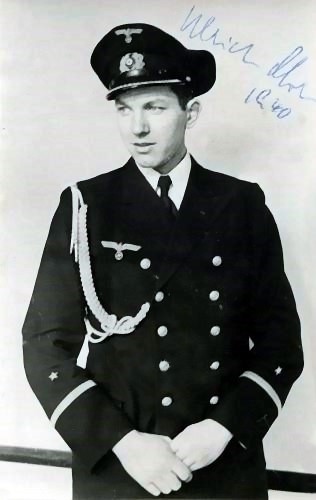The United States Navy, United States Coast Guard, and United States National Oceanic and Atmospheric Administration (NOAA) use a hull classification symbol to identify their ships by type and by individual ship within a type. The system is analogous to the pennant number system that the Royal Navy and other European and Commonwealth navies use.

The Kriegsmarine was the navy of Germany from 1935 to 1945. It superseded the Imperial German Navy of the German Empire (1871–1918) and the inter-war Reichsmarine (1919–1935) of the Weimar Republic. The Kriegsmarine was one of three official branches, along with the Heer and the Luftwaffe, of the Wehrmacht, the German armed forces from 1935 to 1945.

A naval ship is a military ship used by a navy. Naval ships are differentiated from civilian ships by construction and purpose. Generally, naval ships are damage resilient and armed with weapon systems, though armament on troop transports is light or non-existent.

The German auxiliary cruiser Atlantis, known to the Kriegsmarine as Schiff 16 and to the Royal Navy as Raider-C, was a converted German Hilfskreuzer, or merchant or commerce raider of the Kriegsmarine, which, in World War II, travelled more than 161,000 km (100,000 mi) in 602 days, and sank or captured 22 ships with a combined tonnage of 144,384. Atlantis was commanded by Kapitän zur See Bernhard Rogge, who received the Oak Leaves to the Knight's Cross of the Iron Cross. She was sunk on 22 November 1941 by the British cruiser HMS Devonshire.

Merchant raiders are armed commerce raiding ships that disguise themselves as non-combatant merchant vessels.

An armed merchantman is a merchant ship equipped with guns, usually for defensive purposes, either by design or after the fact. In the days of sail, piracy and privateers, many merchantmen would be routinely armed, especially those engaging in long distance and high value trade.

A warship or combatant ship is a naval ship that is built and primarily intended for naval warfare. Usually they belong to the armed forces of a state. As well as being armed, warships are designed to withstand damage and are typically faster and more maneuverable than merchant ships. Unlike a merchant ship, which carries cargo, a warship typically carries only weapons, ammunition and supplies for its crew. Warships usually belong to a navy, though they have also been operated by individuals, cooperatives and corporations.

USS Admirable (AM-136) was the lead ship of her class of minesweeper built for the United States Navy during World War II. In commission from 1943 to 1945, she was transferred to the Soviet Navy in 1945 and served as T-331 until stricken in 1958.
Atlantis is a legendary island first mentioned by Plato.

Commerce raiding is a form of naval warfare used to destroy or disrupt logistics of the enemy on the open sea by attacking its merchant shipping, rather than engaging its combatants or enforcing a blockade against them.

The Regia Marina or Royal Italian Navy was the navy of the Kingdom of Italy from 1861 to 1946. In 1946, with the birth of the Italian Republic, the Regia Marina changed its name to Marina Militare.
SMS Kaiser has been the name of two ships of the German Imperial Navy:

Asian and Pacific theatre of World War I consisted of various military engagements that took place on the Asian continent and on Pacific islands. They include naval battles, the Allied conquest of German colonial possessions in the Pacific Ocean and China, and an anti-Russian rebellion in Russian Turkestan and an Ottoman-supported rebellion in British Malaya. The most significant military action was the careful and well-executed Siege of Qingdao in China, but smaller actions were also fought at Bita Paka and Toma in German New Guinea.
The Royal Canadian Navy uses hull classification symbols to identify the types of its ships, which are similar to the United States Navy's hull classification symbol system. The Royal Navy and some European and Commonwealth navies use a somewhat analogous system of pennant numbers.

The Castle-class minesweeper was a highly seaworthy naval trawler adapted for patrol, anti-submarine warfare and minesweeping duties and built to Admiralty specifications. Altogether 197 were built in the United Kingdom between 1916 and 1919, with others built in Canada, India and later New Zealand. Many saw service in the Second World War.

The action of 29 February 1916 was a naval engagement fought during the First World War between the United Kingdom and the German Empire. SMS Greif, a German commerce raider, broke out into the North Sea and Admiral Sir John Jellicoe dispatched Royal Navy warships to intercept the raider. Four British vessels intercepted the commerce raider Greif. The armed merchant cruiser RMS Alcantara and Greif fought a brief engagement before British reinforcements arrived when both were severely damaged, both being sunk.

The Scuttling of SMS Cormoran off Guam on April 7, 1917 was the result of the United States entry into World War I and the internment of the German merchant raider SMS Cormoran. The incident was the only hostile encounter between United States and German military forces during the Pacific Ocean campaign of the war.
Several ships have been named Takao (高雄):

Ulrich Mohr was a German naval officer and the adjutant on the Kriegsmarine auxiliary cruiser Atlantis during the Second World War, where one of his functions was to board captured ships and search for secret papers that might be of use to the German war effort.
This page is based on this
Wikipedia article Text is available under the
CC BY-SA 4.0 license; additional terms may apply.
Images, videos and audio are available under their respective licenses.












